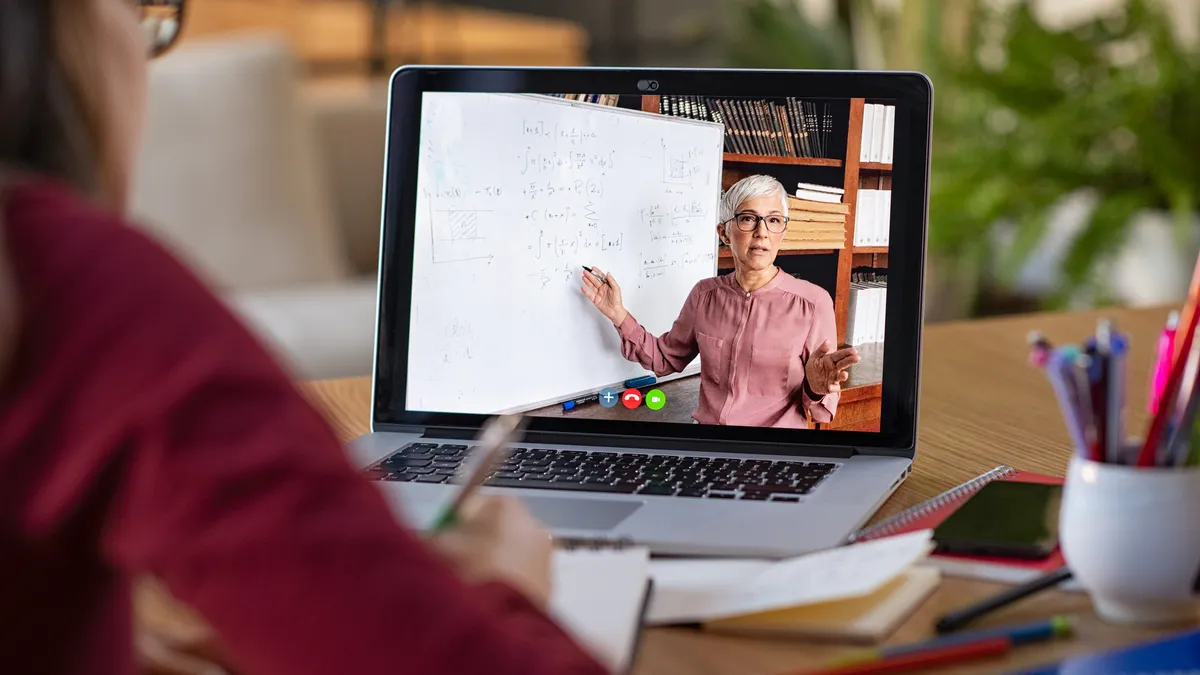As the pace of learning slowed for most students this past year and accelerated for some, Westminster Public Schools’ competency-based education approach proved its worth.
After the coronavirus pushed students into remote learning due to the COVID-19 pandemic last spring, reports in the fall showed students across the country lost chunks of learning time, which must be addressed, said David Yanoski, a researcher at Regional Educational Laboratory Central at Marzano Research. Reading growth for most students was near normal, but the biggest effects were on math because it is so sequential, he said. If students miss a math concept, they are unlikely to understand later concepts.
By design, the Colorado district’s competency-based system identifies those lost chunks for each student and requires them to demonstrate proficiency before moving on to the next level.
Westminster has been developing the personalized approach for more than a dozen years, said Chief of Instruction and Assessment Jeni Gotto. Work began in 2009 after teachers voted overwhelmingly to embrace the system, which she said they called “standards-based” at the time.
The competency-based system enables students to accelerate in some subjects while getting the extra time and help they need in others. For example, a 9-year-old may be at level 4, or a 4th-grade level, in some subjects, but level 5 in math and level 3 in literacy, the district says on its website.
“The competency-based system works because it recognizes that every student learns differently,” the district said.
Westminster Chief Education Officer Oliver Grenham and Gotto outlined steps their district is using to address the needs of students returning to campus from online learning, or those expected to return in the fall after disappearing entirely from contact with schools.
-
Check in on students’ emotional and mental health status. These needs should be addressed first, Grenham said.
-
Then, look at their academic status — where students left off and where their academic needs are now.
-
Give students an opportunity to test out or otherwise demonstrate learning on some standards they may not have met before pandemic-related disruptions.
-
Offer opportunities for extended learning time. For example, Westminster will add 12 additional optional learning days this summer, which can also address social-emotional learning to welcome students back, he said. Extra tutoring during the school day is available, Gotto said. Some schools also offer extended-day programs.
-
Reduce class sizes or increase staff-student ratios for the next couple of years.
Westminster’s learning management system shows students, their parents and educators all the standards a student has met. Students will also be able to pick up where they left off, Grenham said.
After students demonstrate proficiency in all the skills for that grade level, they participate in “leveling up” ceremonies throughout the year, Gotto said. The district tracks students’ proficiency in each required skill or standard in its learning management system, Empower Learning, which also allows students and parents to follow individual progress.
Students, particularly in elementary grades, may also keep color-coded paper records of their progress on each standard, she said.
Elementary students all have a homeroom teacher corresponding to their age-based grade level, Gotto said. Principals build a master schedule similar to those in secondary schools for classes in different subjects at different levels, she said.
Westminster does not promote a student who has met some, but not all, standards to the next grade level, Gotto said.
This year, more students experienced learning gaps, which may not be apparent right away but will hinder future achievement, Grenham said. “Learning gaps are cumulative,” he said.
Retaining a student across all subjects in a grade level doesn’t work either, Gotto said.
Students get bored and become unengaged by the grade-level content they already mastered. The competency-based system shows the exact standards the student still needs to learn the next year, Gotto said. It doesn’t require a student to waste time repeating those they already completed. The school then celebrates when students meet them, she said.
Westminster has an annual summit for other superintendents to see and learn about its approach to competency-based education.
Starting a school pilot
The approach is backed by the authors of a report from Regional Educational Laboratory Central at Marzano Research, “Overview of Selected State Policies and Supports Related to K-12 Competency-based Education.”
Although Westminster launched its approach district-wide by tracking each student’s progress in its learning management system, other schools or classrooms can do something similar with personalized learning.
“I look at personalized learning as something a teacher could implement in a classroom,” Yanoski, a co-author on the report, said. “Competency-based education requires wholescale change at the district level.”
Yanoski also led a webinar about Westminster’s practice and how classroom teachers could use personalized learning to address COVID-19 learning gaps.
Other schools and districts may want to check what opportunities their own state systems offer for personalized learning or competency-based education, which can include career academies and dual-enrollment courses, Managing Senior Researcher R. Marc Brodersen, the report’s lead author, said.
Schools or individual classroom teachers can also implement personalized learning, Yanoski said. Recommended steps include:
-
Start by figuring out exactly what standards and skills students need.
-
Decide how to assess them.
-
Design instruction to meet each standard.
Direct instruction can be whole-class, small-group or individual. Ideally, assignments would be project-based and designed to engage students’ personal interests across various subjects and standards. For example, projects may require a combination of reading, research, writing and mathematical components with statistics and visual elements like graphs. Assignments may also include specific-purpose worksheets or computer-based assignments, Yanoski said.
“All the strategies are available,” Brodersen said.
They all require a professional teacher working with a student, Yanoski said.
Assessments include the day-to-day data teachers gather. In physical classrooms, data may come from teachers looking over students’ shoulders as they work or listening to their conversations. They may also include exit tickets, quizzes, tests and even large-scale assessments, the researchers said.
“With all the disruptions, revisiting competency-based education and personalized learning is relevant,” Brodersen said. “You’re working with students where they are.”
During the COVID-19 pandemic, some students may not have gained as much as usual in English/language arts, and others may have learning gaps in Algebra I.
“If we can assess students, we can address these gaps without their having to repeat a whole school year,” Brodersen said.
Since REL Central published the overview in 2017, the region’s seven states have shown more interest in adopting personalized learning and competency-based education.
For example, Kansans Can starts with pilot schools, with goals for every school in the state to go through a redesign including personalized learning and social-emotional learning, Yanoski said.
North Dakota also provided an avenue for schools and districts to move away from seat-time-based approaches to measuring educational attainment, such as Carnegie units. Senate Bill 2196 establishes an opportunity for districts to work through mastery-based credits, including work-based opportunities for career and technical education, Brodersen said.
Likewise, the state of Colorado has been slowly but surely removing barriers to competency-based education, Yanoski said.
“States have shown an interest in removing some of the barriers,” Yanoski said. “By embracing personalized learning even at the school or district level, you have the opportunity to do what’s better for kids.”

















